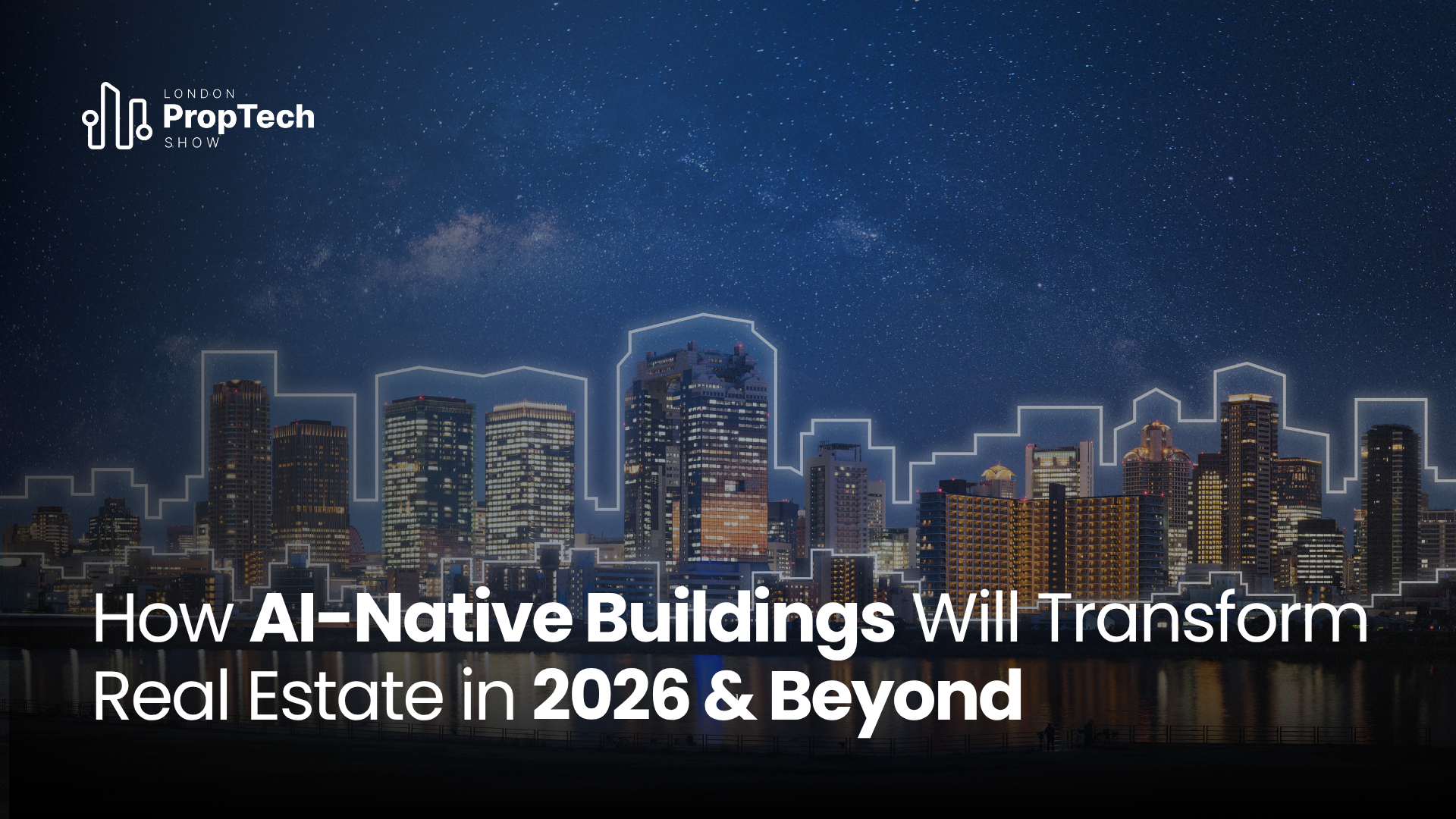The real estate industry has long been defined by physical assets, conventional operations, and incremental innovation. But as we enter 2026, a profound shift is underway, a shift driven by AI-native buildings. Unlike traditional smart buildings that simply integrate sensors and automated controls, AI-native buildings are born digital. They learn, adapt, optimise, and make decisions in real time, fundamentally reshaping how spaces are designed, operated, financed, and experienced.
AI-native buildings represent the convergence of intelligent data systems, cloud computing, robotics, and machine learning into a unified architectural and operational core. Their emergence signals a future where buildings are not just functional structures but autonomous, cognitive partners in the built environment. As we move into 2026 and beyond, this transformation stands to redefine real estate economics, sustainability, and tenant expectations across every asset class.
From Smart to Sentient: The Evolution of AI-Native Buildings
For over a decade, the term “smart building” has captured the industry’s attention but smart does not mean intelligent. Most buildings today rely on fragmented systems: one for HVAC automation, another for lighting, and a separate one for access control, all functioning in isolation. AI-native buildings break this fragmentation.
An AI-native asset integrates all operational systems from energy management and security to maintenance and occupancy analytics into a centralised AI engine. This engine continuously learns from live data, past behaviour, and predictive models. It does not wait for humans to issue commands; it acts proactively, optimising building performance minute-to-minute.
This shift marks the difference between a building that responds and one that thinks.
1. Autonomous Operations Will Redefine Building Performance
One of the most transformative impacts of AI-native buildings is the rise of autonomous operations. Advanced algorithms analyse occupancy patterns, environmental conditions, equipment performance, and energy usage in real time.
By 2026, the industry is moving rapidly toward buildings that can:
- Adjust HVAC systems for micro-zones automatically
- Predict equipment failures weeks in advance
- Schedule maintenance without human intervention
- Optimise lift and escalator operations based on live footfall
- Regulate lighting dynamically based on daylight and occupancy
- Detect anomalies in water, electricity, or security systems instantly
The AI does not merely automate tasks; it orchestrates the building like a high-performing organism. Early adopters are already reporting 20–30% reductions in operating costs and significant improvements in energy efficiency.
As the market tightens and real estate distress grows across many segments, such efficiency gains will not be optional but essential for asset competitiveness.
2. AI-Native Buildings Will Become the Standard for Net-Zero Pathways
Sustainability is no longer a corporate aspiration, it is a regulatory and investment obligation. New ESG mandates, carbon reporting frameworks, and tenant expectations are accelerating the need for buildings that actively monitor and reduce emissions.
AI-native buildings will lead this charge through:
- Dynamic energy optimisation
- Real-time carbon tracking
- Automated waste-to-resource workflows
- Predictive energy procurement
- Integration with smart grids and micro-grids
Rather than being retrofitted with sustainability solutions, AI-native buildings will be sustainable by default. Their algorithms ensure the lowest possible energy consumption without affecting user comfort. Over time, these buildings will be able to trade energy, balance local grids, and actively participate in urban sustainability ecosystems.
For investors and developers, this shift will directly influence valuations, underwriting models, and financing structures. Sustainable performance will become as important as location.
3. Digital Twins Will Become the Operating System of Real Estate
No conversation about AI-native buildings is complete without digital twins. A digital twin is a dynamic virtual replica of a building that simulates operations, predicts problems, and enables scenario planning.
By 2026, digital twins are evolving into full operational platforms that:
- Test asset performance models
- Simulate tenant behaviour
- Map out energy and maintenance cycles
- Optimise space layouts before physical changes occur
- Identify safety risks and compliance gaps
- Train AI algorithms using synthetic data
This convergence of simulation and real-time data elevates building performance to new heights. For developers, digital twins reduce construction risk. For asset managers, they provide unprecedented operational visibility. And for cities, digital twins form the backbone of smarter urban planning.
AI-native real estate will not simply use digital twins it will depend on them.
4. The Tenant Experience Will Become Hyper-Personalised
In the next phase of real estate evolution, tenant experience will become a competitive differentiator. AI-native buildings will shift the paradigm from a “one-size-fits-all” environment to a personalised, adaptive ecosystem.
Whether it's residential, commercial, logistics, or mixed-use, these buildings will tailor spatial experiences based on individual preferences and behaviour patterns. For example:
- Workspaces that adjust temperature and lighting to individual comfort
- Touchless access systems that recognise users instantly
- AI-powered concierge services
- Predictive traffic flow in common areas
- Automated visitor management and security
Tenants will no longer simply use a building; they will interact with it. Buildings will anticipate their needs, making the user experience seamless, intuitive, and frictionless.
Such personalised environments dramatically increase tenant satisfaction and retention, unlocking higher lifetime value for landlords and operators.
5. AI Will Transform the Economics of Real Estate
The rise of AI-native buildings is not just a technological evolution; it is an economic revolution. As buildings become data-rich, self-optimising assets, the financial fundamentals of real estate will shift.
AI will impact valuations, underwriting, asset financing, and risk management in several ways:
- Higher NOI: Automation and optimisation reduce Opex substantially.
- Lower Capex Waste: Predictive maintenance extends equipment life cycles.
- Increased Asset Liquidity: Better data transparency reduces investor risk.
- New Business Models: Subscription-based building services, energy trading, and data monetisation.
- Reduced Vacancy Risk: Superior tenant experience and performance.
In an era where many real estate sectors face pressure from rising distress, AI-native buildings provide a decisive strategic advantage. Investors increasingly view them as lower-risk, future-proof assets, a trend likely to intensify by 2030.
6. Cities Will Be Re-Architected by AI-Native Infrastructure
AI-native buildings do not exist in isolation; they exist within AI-native cities. As governments push for smarter mobility, sustainability, and urban governance, buildings will become active nodes in a citywide digital ecosystem.
This urban transformation will enable:
- Interconnected transport, utilities, and energy networks
- Real-time city analytics
- Optimised traffic flow and public safety
- Cross-building energy and resource sharing
- Urban digital twins for policy simulation
The built environment will function as an interconnected grid, operating on shared data, predictive intelligence, and autonomous decision-making. This creates a new model of urban efficiency and resilience.
For the UK, this shift aligns with long-term innovation and climate commitments, positioning London as one of the world’s leading AI-native metropolitan hubs.
The Road Ahead: Preparing for an AI-Native Future
As we move into 2026 and beyond, the question is no longer whether AI-native buildings will reshape real estate, it is how fast the industry can adapt. Developers, investors, architects, and policymakers must embrace a new mindset where buildings are understood as intelligent digital platforms.
Preparation will require:
- A digital-first approach to design and construction
- Strong data governance and cybersecurity frameworks
- Interoperable systems and open standards
- Collaboration between technology providers, real estate leaders, and urban planners
- A clear strategy for AI ethics and accountability
Those who prepare early will lead the next generation of real estate.
Conclusion
AI-native buildings represent a defining shift in how we design, operate, and experience the built environment. They go beyond automation to deliver intelligent, autonomous, and sustainable real estate ecosystems that enhance value for all stakeholders. As this transformation accelerates in 2026 and the years ahead, the industry stands at the threshold of unprecedented innovation.
The London PropTech Show 2026 will be at the forefront of this conversation, bringing together global leaders who are building the next era of AI-native real estate.


